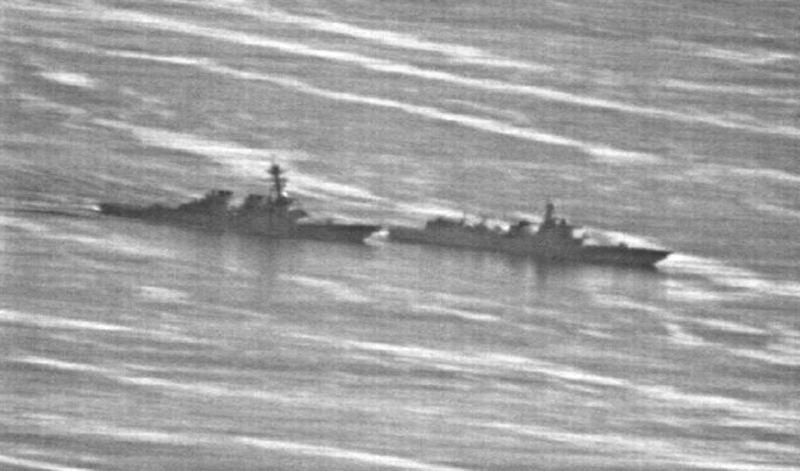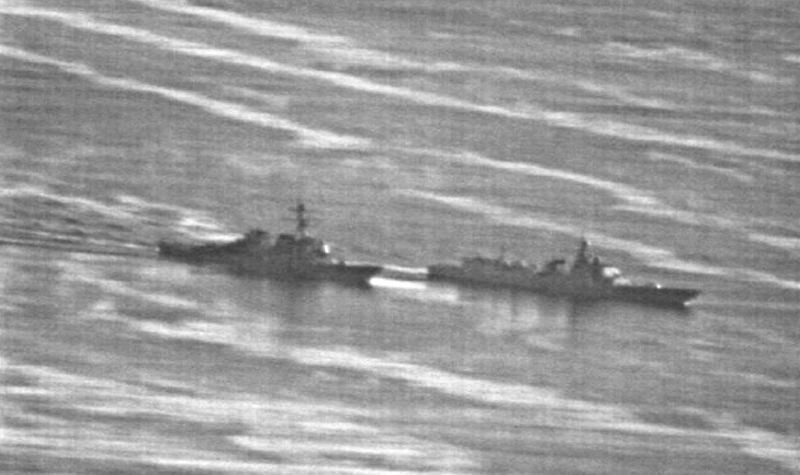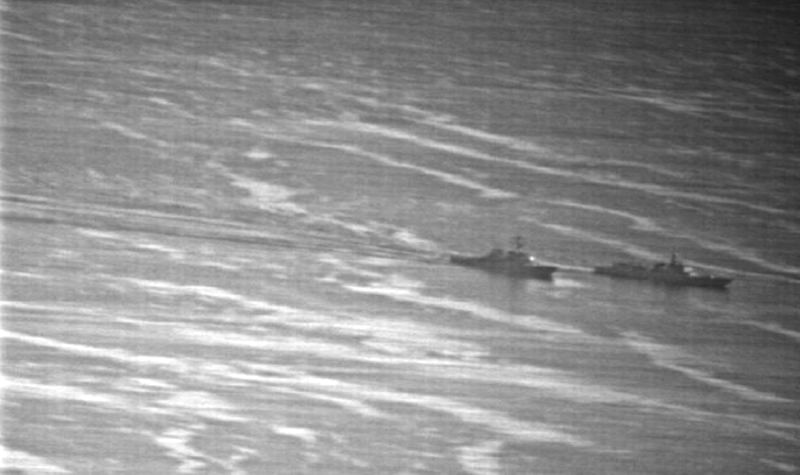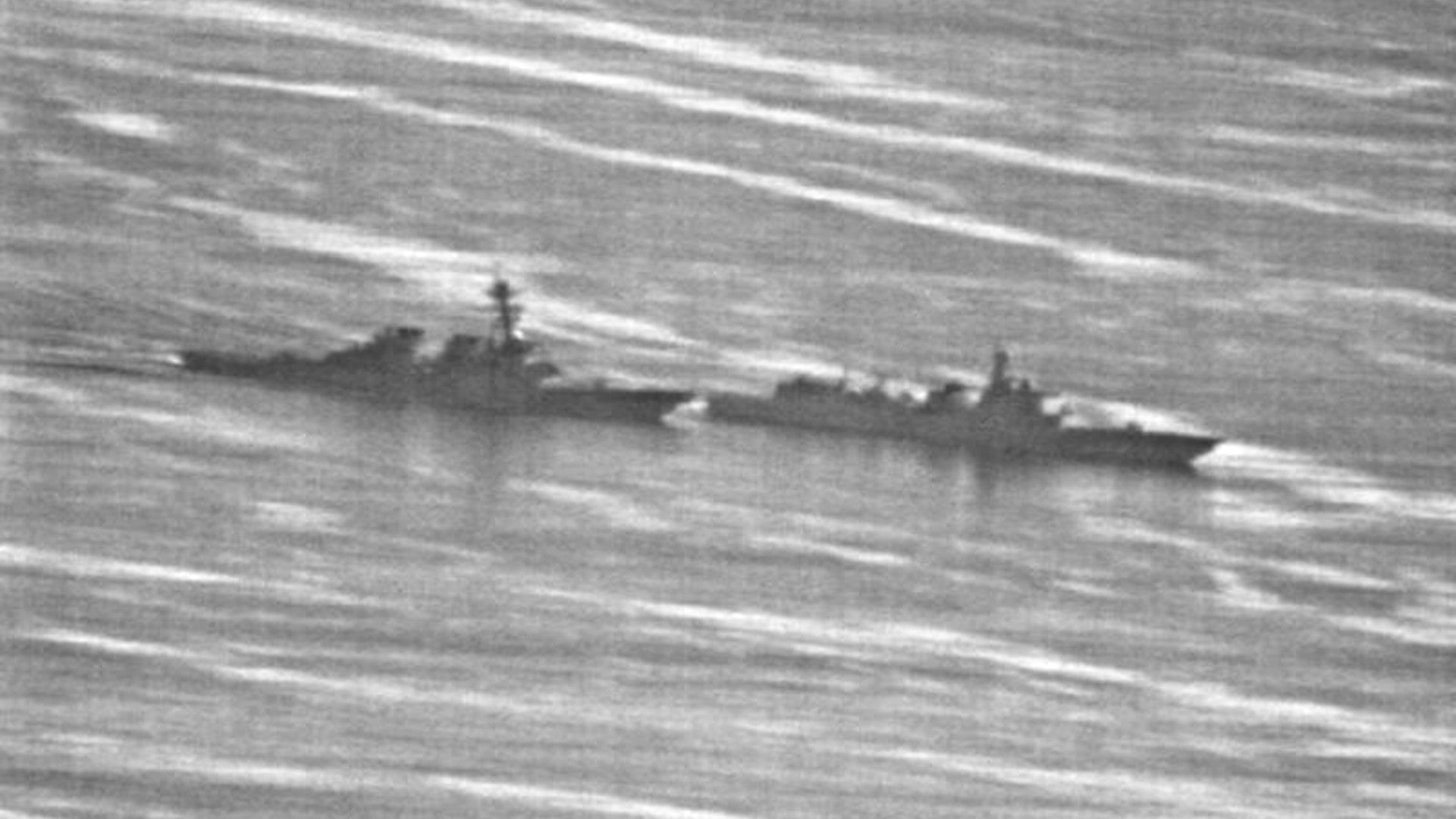The U.S. Navy has released a series of images showing the Arleigh Burke-class destroyer USS Decatur‘s close encounter in the South China Sea with the Chinese People’s Liberation Army Navy’s Type 052C Luyang II-class destroyer Lanzhou. The images show just how dangerous the Chinese ship’s maneuvering was and how close the two vessels were to a potentially serious accident.
gCaptain was first to obtain the images, which showed Lanzhou pulling close in front of Decatur and then the two ships maneuvering apart. The images are likely to be still captures taken from the video feed from the sensor turret on the American destroyer’s MH-60R Sea Hawk helicopter or an Insitu drone launched from Decatur. In its official statement, the Navy said the Chinese ship, which it initially identified only as a “Luyang-class” vessel, came within 45 yards of the American destroyer, during the incident on Sept. 30, 2018.

This might sound like a plentiful amount of space between the two ships, but for vessels displacing thousands of tons and which are relatively slow maneuvering, it is too close for comfort. Just for perspective, 45 yards is less than one-third of a ship length for Decatur. In 2017, two of the Navy’s Arleigh Burke-class destroyers suffered separate collisions in the Western Pacific region, causing horrendous damage to the vessels and more importantly, the loss of multiple sailors’ lives.


After the Navy revealed the South China Sea incident had occurred, China’s Foreign Ministry responded by saying that Decatur had been in violation of their “indisputable sovereignty” in the area around Gaven Reefs in the disputed South China Sea. “We strongly urge the U.S. side to immediately correct its mistake and stop such provocative actions to avoid undermining China-U.S. relations and regional peace and stability,” the statement continued.
The images show that the Lanzhou was the one responsible for the “proactive actions.” The Navy says that it remained 12 miles away from the actual Chinese-occupied man-made outpost on the Reef. Decatur had been in the area specifically to conduct a so-called Freedom of Navigation Operation patrol, or FONOP, which the United States performs in protest to China’s broad claims of ownership of the vast majority of the South China Sea.
The U.S. government, along with the majority of the international community, does not recognize China position, which is an increasingly contentious issue you can read about in more detail in our initial analysis of the incident. It will also be interesting to see a more detailed account of this event as there is usually much more to these types of encounters than what is initially reported and still images can only tell us so much.
We will report back when we find out more.
Contact the author: jtrevithickpr@gmail.com
